Neonate Husbandry
I highly recommend Greg Maxwell’s The More Complete Chondro for anybody interested in green tree pythons, especially for those interested in purchasing a green tree python. This husbandry page is not in-depth and primarily outlines how I house and care for my sub-adult chondros and what works for me. If you have more specific questions, please feel free to contact me directly.
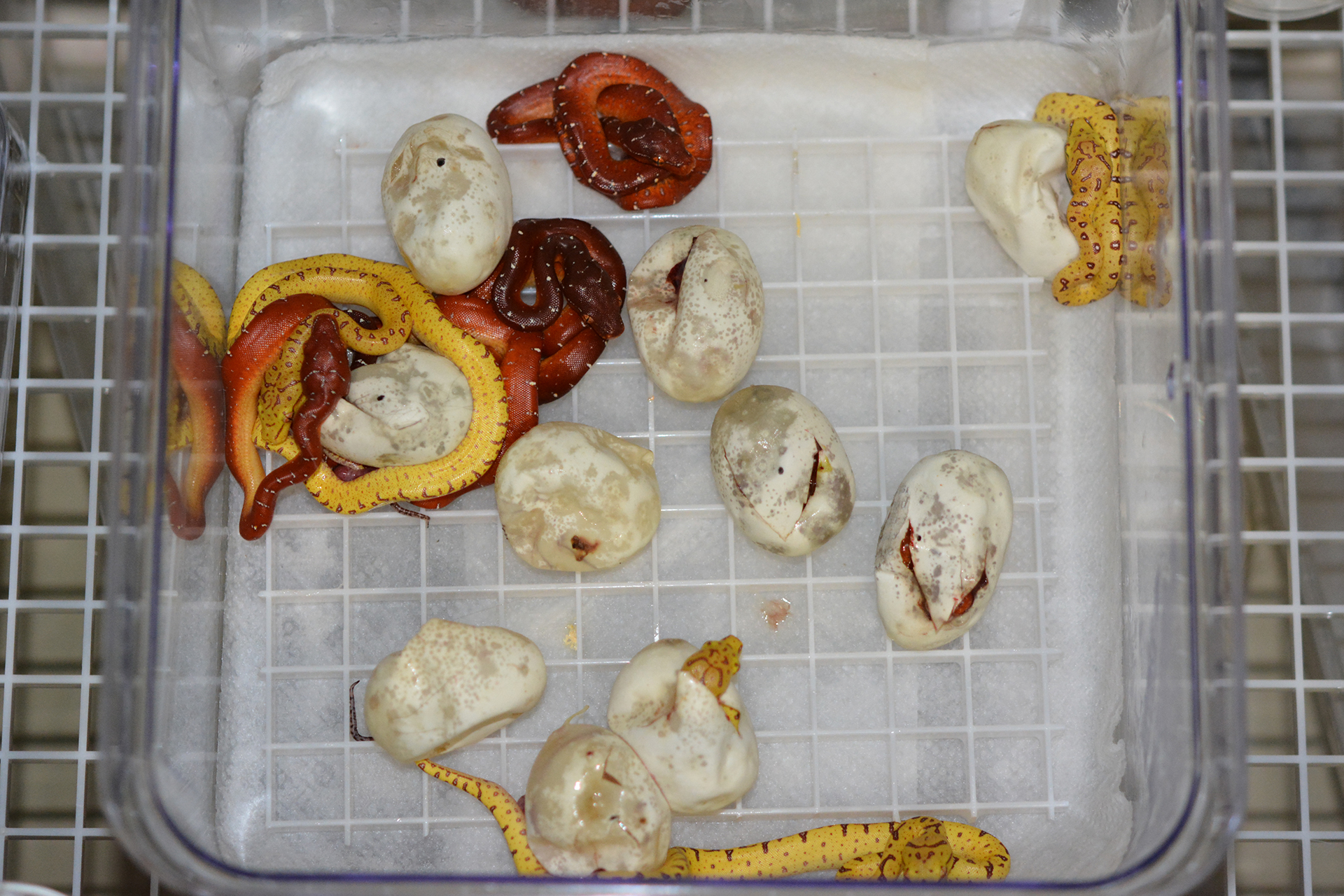
Hatching
I allow my hatchlings to emerge from their eggs in a hatch tub before placing them into individual tubs within a rack system.
Neonate Rack and Tubs
I usually maintain my hatchlings in 6.5-quart Rubbermaid “Clear Impressions” containers until they are about one year old. Sometimes, when they are very young they rub their heads and need to be moved up into larger, sub-adult tubs. Using larger-sized rack cages, when needed, has worked well and does not deter my snakes from eating and at times has shown to improve feeding response.
My racks are made from melamine and are protected from moisture using contact paper. The heat tape runs along a groove about three quarters of the way back from the front of the tubs and is regulated using a Herpstat thermostat.
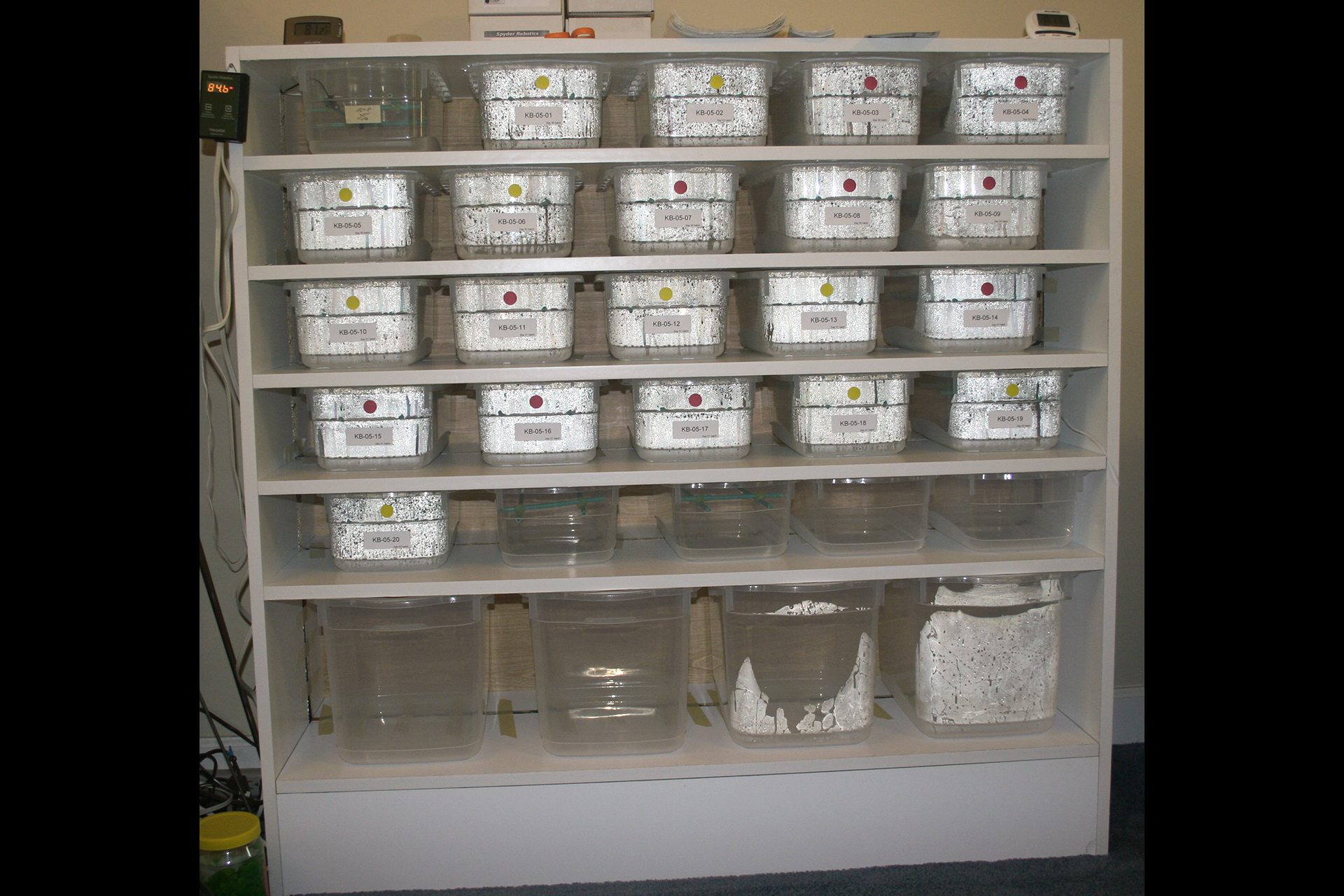
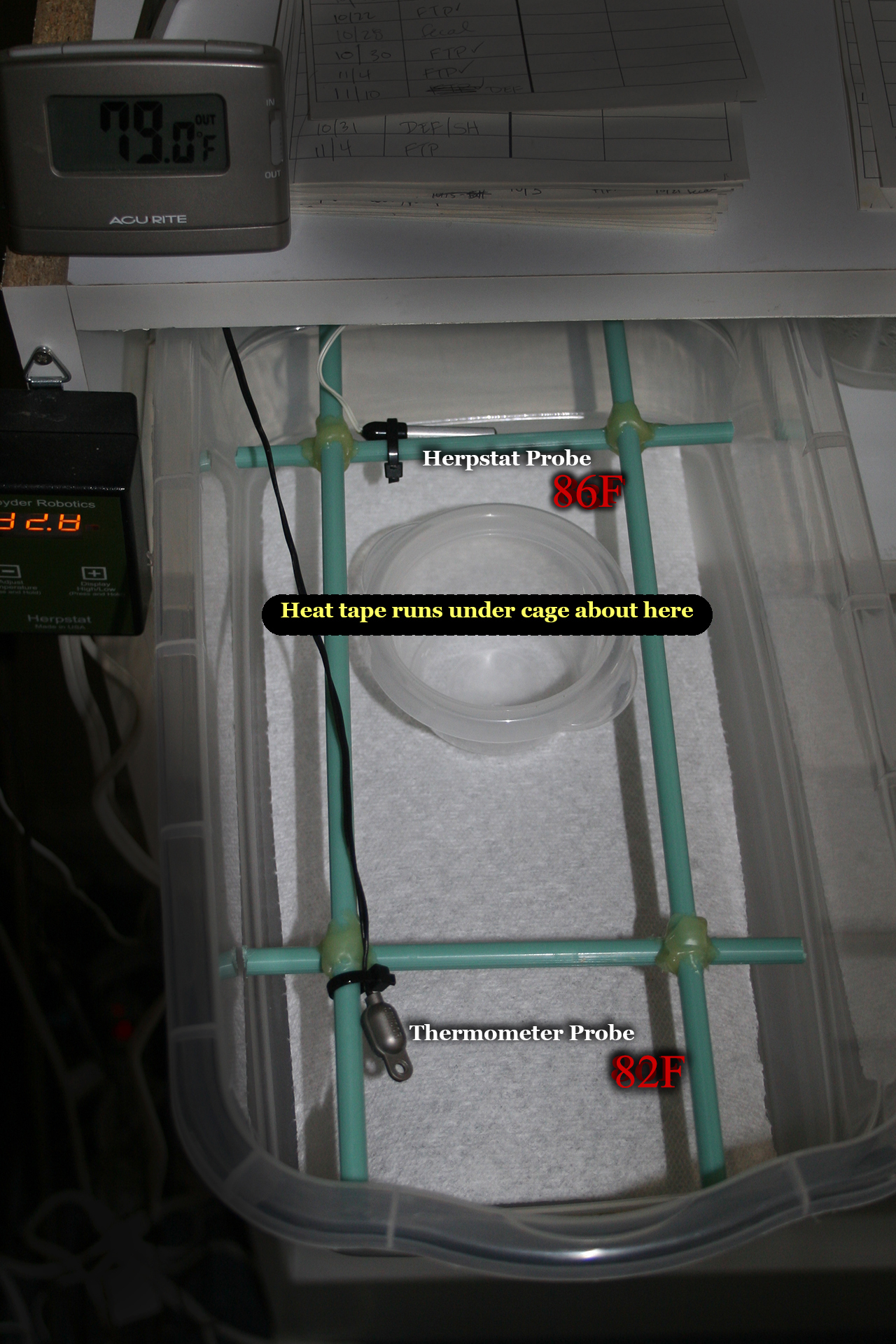
Temperatures
A shallow gradient of 82F-86F (27.8-30C) is maintained from the back to the front of the cage using heat tape regulated by a Herpstat thermostat. Shown is a picture of the control tub within the baby rack system that controls the temperatures for all the neonate tubs in the rack. I am aiming for a body temperature 83-85F (28.3-29.4C).
Perches
I use plastic clothes hangers cut and hot glued together in a crisscross pattern as perches for neonates.
Substrate
Young chondros defecate frequently so I suggest using paper towels as a substrate or keeping the bottom of the cage bare. Brawny “select-a-size” paper towels are strong and fit perfectly in the bottom of each Rubbermaid tub, so cleanup is quick and easy. Some breeders have experienced paper towel ingestion in neonates and will choose to use a bare cage bottom with this age. I choose not to go substrate-free because I have difficulty maintaining humidity, and defecation removal is much more difficult.
Humidity
I maintain high humidity levels in my hatchling cages. I do allow the cages to drop in humidity but rarely dry out. I avoid spraying hatchlings directly with water because this appears to greatly disturb them. Instead, I pour water into the bottom of the cage to maintain humidity. A water bowl is included immediately after hatching to promote drinking and to maintain humidity.
Shedding
I make sure to keep a close eye on humidity levels when I start to see neonates go into shed. This can be hard to recognize in young chondros, but look for swelling in the head region as seen in the two photos below:
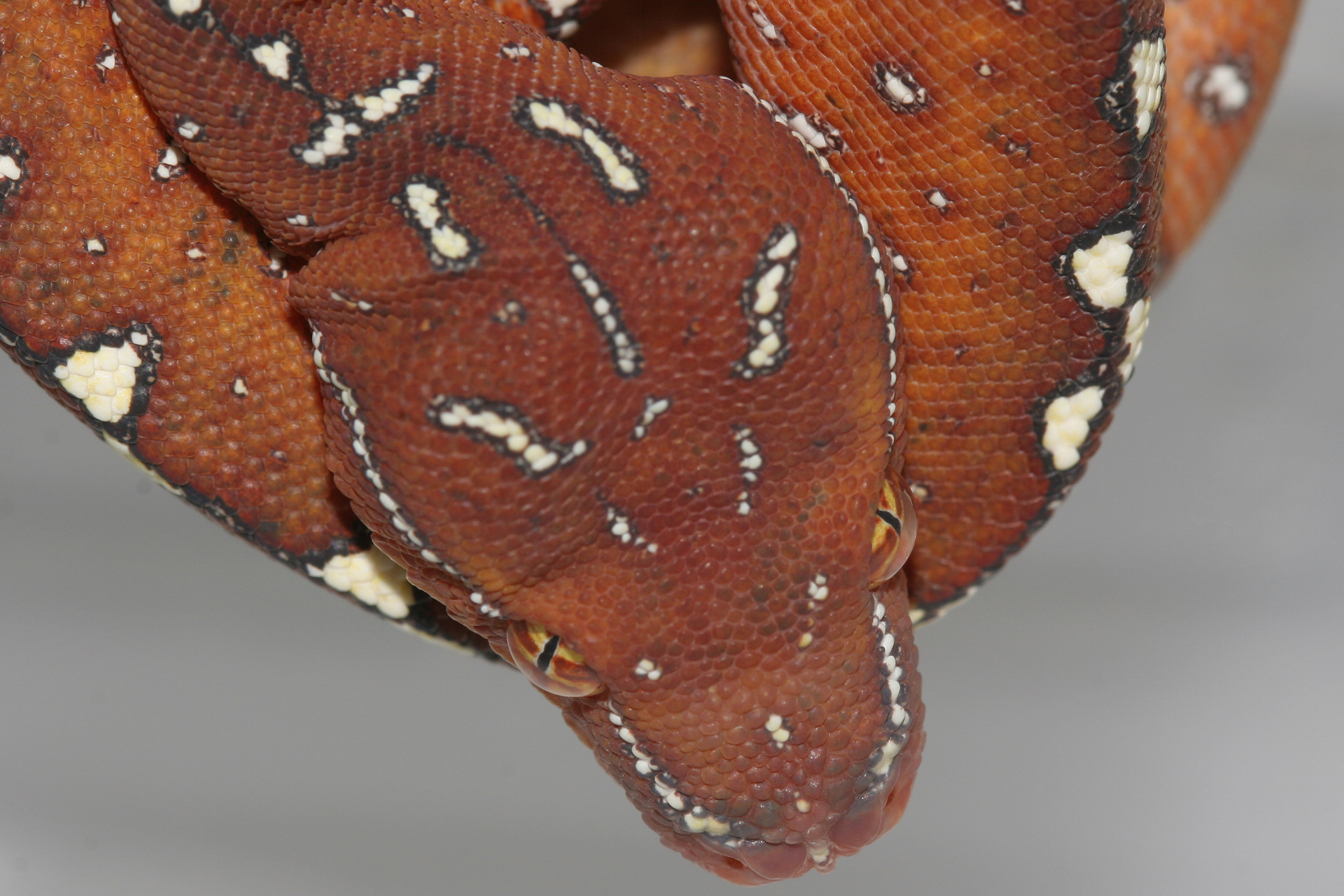
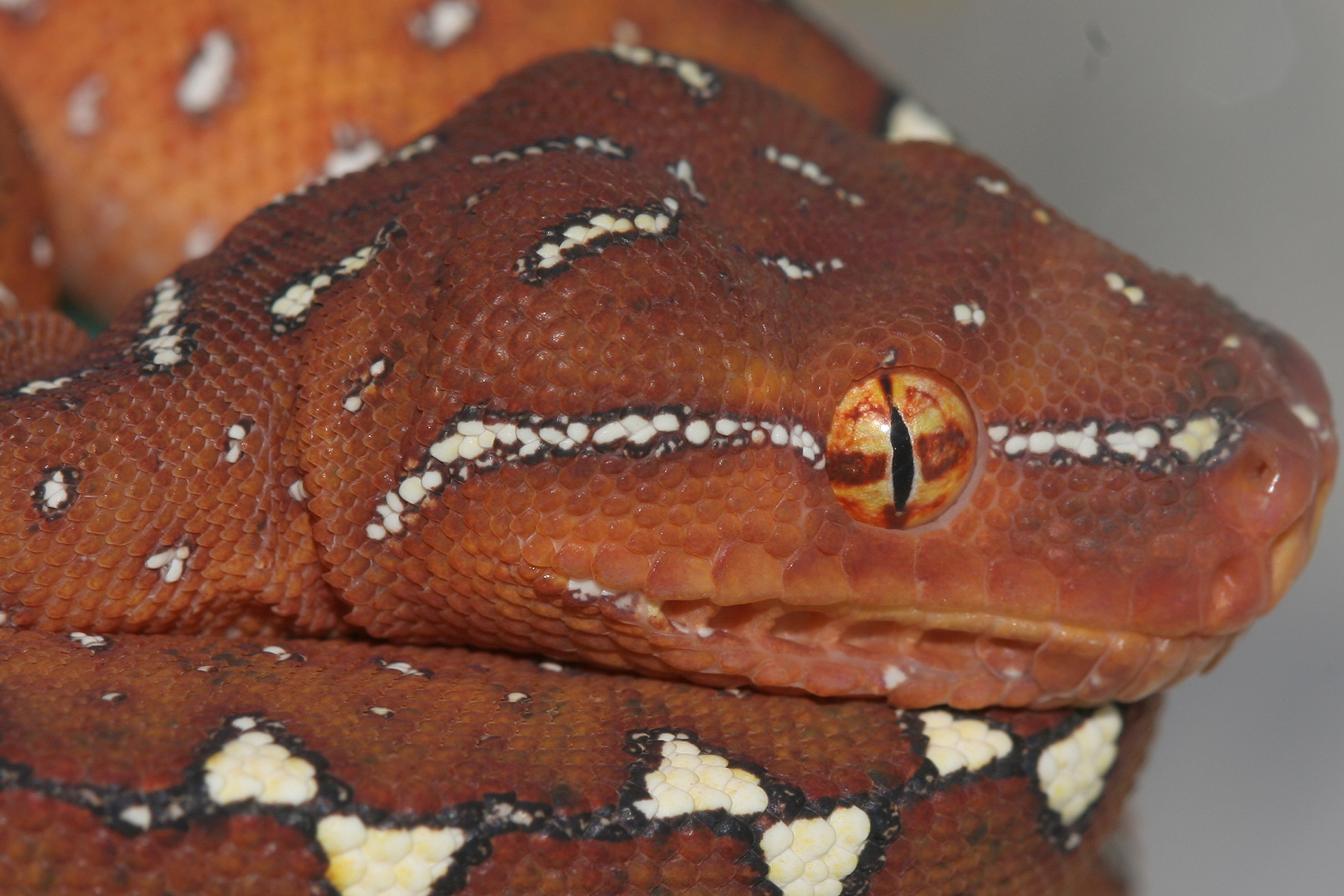

Feeding
I feed neonates every 4-7 days as long as they are taking full-sized meals. Day-old pinkies are offered to hatchlings and meal sizes are increased as the neonates grow. If a hatchling is refusing food, I will attempt to feed every three days and wait a few weeks before deciding to assist feed. If I have to assist feed a neonate, I usually attempt to offer meals every 3-4 days, assist feeding a pinky head if the snake refuses. I choose to assist feed pinky heads because I like to allow the baby the chance to practice swallowing a meal on its own. Hatchlings have to learn to recognize pinkies as a food source, then learn to strike at food, hold on to food, wrap food, and swallow food. Some babies catch on to this process faster than others. Occasionally I will force feed a pinky head or entire pinky but many times babies that require this effort have existing underlying issues that may not surface immediately, other than their unwillingness to eat, and they will eventually die. I try to give neonates every opportunity to survive.
Defecation and Cleaning
Regular cleaning and disinfection of hatchling cages is very important. Young chondros are fragile and require excellent husbandry practices in order to stay healthy. High humidity levels can encourage bacteria and other unwanted organisms to thrive; therefore, I clean their cages and provide fresh water frequently. I use regular dish soap and water to clean the cages and water bowls. I avoid the uses of harsh chemicals like bleach or ammonia unless I am disinfecting the cage for a new snake.
Handling
I only handle neonates if absolutely necessary. Once they are strong feeders, I will sometimes get them used to being touched by removing their perch and cradling their perched bodies in my hand. Never force a neonate chondro off its perch; treat them like they are extremely fragile. Most neonate chondros are feisty and will strike when startled or upon attempting to remove them from their perch. Gently encourage a neonate off their perch by lifting the upper portion off the perch and then tickling the lower half to encourage movement while gently lifting up. Once in hand, most neonates are calm as long as you do not restrain them and give them a finger or thumb to perch on.
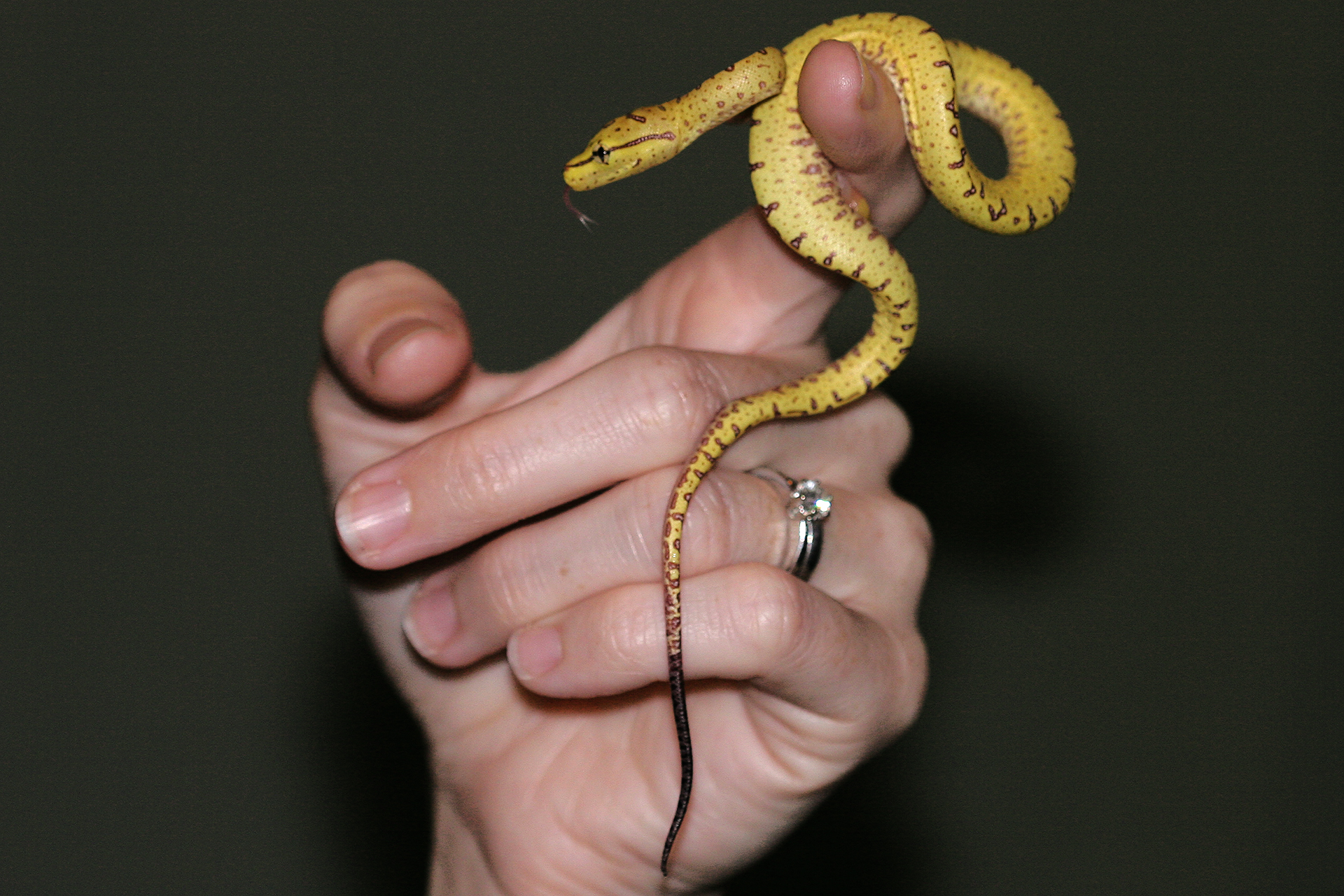
New Neonate Chondro Behavior
Bringing home a new chondro is an exciting and sometimes challenging adventure, especially for new owners. I have found that young chondros adapt faster than older chondros to travel and a new home but this can be difficult to predict. Some chondros will be stressed for weeks after arriving and exhibit this in various ways, including refusing food or grounding themselves rather than perching. Neither of these behaviors is unusual and given time and space they will learn their new home and owner and will resume eating and perching. You can always contact me with any questions regarding your snake’s behavior.
Your New Chondro Caging and Set-up
It is always best to have your small cage ready to go well ahead of time before placing a new chondro in it. It can take some time to get the temperature and humidity set just right. I recommend housing neonates in small cages, like a Rubbermaid, in a quiet area. While I do not recommend them, if a display cage is used, it should be small and have plenty of hiding places. Fake pothos vines from your local arts and crafts store provide excellent hiding areas. Neonates need to feel secure in their cage or they will become stressed and refuse to eat. I find that feeding problems most often persist in neonates that are housed in display type cages, clear sided “critter cages,” and cages that are too large. A neonate chondro can live for over a year in a 12-quart size container and two to three years in a 20-quart container. Perches should be removable and about the same diameter as the snake’s girth.
I am always more than happy to discuss caging with you and will evaluate caging photos if you email them to me. It is better to get input prior to having a snake in the cage.
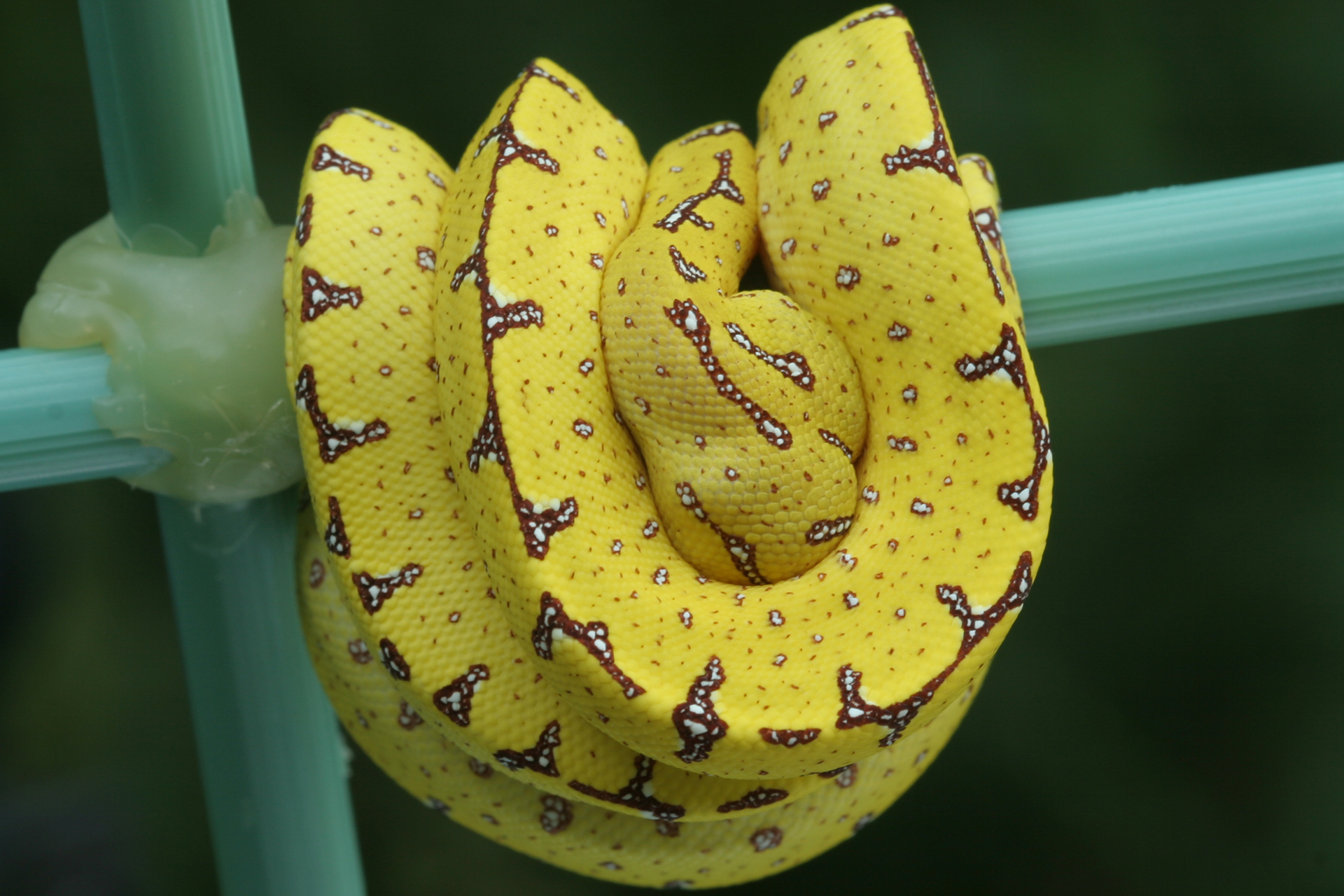
Good breeders will only sell established neonates to new homes; however, it is not unusual for a neonate to go off food in their new home. Patience and communication with the breeder are key to getting your neonate feeding again. Hiding their head in their coils is not an uncommon sight from new chondros.
You are hoping to get this kind of reaction when you present food after the lights go out.

So what do you do when you new neonate refuses food? First, please do not panic as this is not an uncommon occurrence. Please do not rush to assist feed, offer live food or pinkies scented with unusual animals that can transmit diseases. Contact your breeder for help as soon as you cannot get your baby to eat. Baby chondros that have been good feeders when you received them can go many weeks without food.
Troubleshooting Feeding Neonates
The following are tips that you might find helpful for getting a baby chondro to accept food. Find out what kind of food was offered to your neonate. Try offering food at different times of the day, scent with chick down or rat fur, and try not to walk away from a feeding without at least one strike. Strikes will usually start off as defensive but many times if their open mouth comes into contact with a pinky, they will hold on. It is not unusual, however, for them to spit pinkies out and require several bites before they will hold on. Avoid contacting the front of their face with the pinky, but rather, tickling either side of their jaw or lips. Try and find your baby’s “trigger” area. This is an area that they cannot tolerate being touched. Aggravate this area in particular on a stubborn feeder. Feeding a stubborn neonate is a learned art and it is always best if you can observe someone with experience. You will probably be surprised at how aggressive you can get while still being gentle. Sometimes assist feeding is required if you notice your neonate is losing weight. Contact your breeder or ask someone if you need help!
Final Note
Owning one of these beautiful snakes really is a special blessing. They are interactive characters that are a joy to just sit and watch. They deserve the best care possible from their keeper. It is important to know a vet in your area that can help you but you should also educate yourself in case your vet does not have much hands-on experience specifically with chondros. Chondros are sensitive animals and can stress easily and come down quickly with an illness so spend time learning what is normal for your snake. Take the time to set your chondros up properly with the right equipment and you should have many years of enjoyment with your chondros. Yes, I said chondros plural because you can’t have just one!
